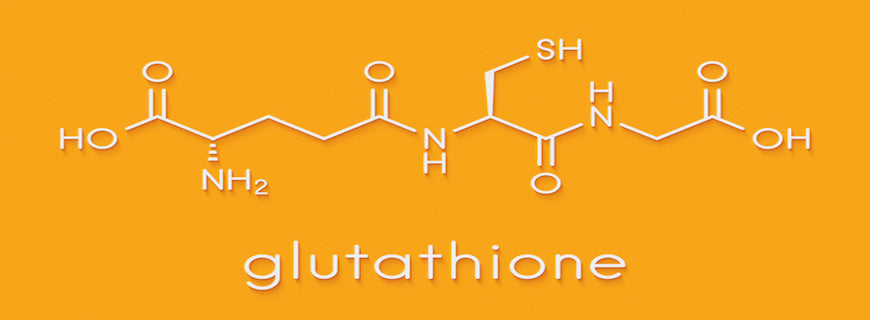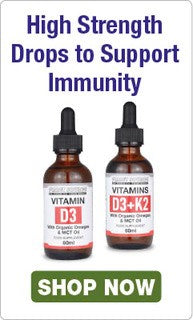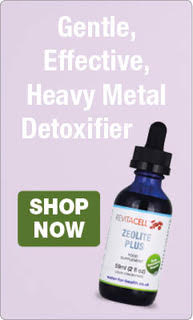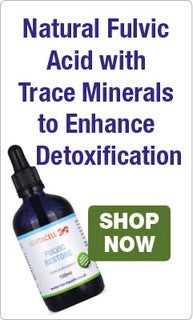It’s been dubbed a master antioxidant, a bastion of defence against chronic illness and a major natural detoxifier. Some people even believe that it helps to slow the ageing process.
But what is s-acetyl glutathione, how does it work, and does it live up to the considerable hype?
Although glutathione (GSH) is one of the most frequently talked-about antioxidants and detoxifying agents among functional and integrative medical doctors (1) – as well as champions of natural health – many people remain in the dark, wholly unaware of the compound’s ability to counteract oxidation-related cell and mitochondrial damage, chelate heavy metals, build and repair tissues and prevent inflammation.
Read on to discover more about the benefits of s-acetyl glutathione!
Glutathione: A Well-Kept Secret
This can be attributed to a few factors. One is that until relatively recently, the effectiveness of glutathione as an oral supplement was somewhat negligible; with its customary efficiency, the stomach would break down around 90% of glutathione, leading to a rise in practitioners offering intravenous administration.
Such treatments make glutathione more bioavailable but they’re also very expensive. And not everyone is thrilled by the idea of IV therapy.
Another stems from its sheer complexity. A small tripeptide molecule comprising three ‘building block’ amino acids – L-glutamate, L-cysteine and glycine – glutathione is more difficult to define and explain than, say, chlorella, spirulina or other so-called super foods and substances.
Read on to learn more about glutathione, and in particular the benefits of s-acetyl glutathione.
What Does Glutathione Do?
Produced in the liver, glutathione is used by every cell and tissue in the body – though its intracellular levels decline naturally we get older: natural production falls by approximately 10% each decade.
Stores also deplete more rapidly if we are battling health complications, exposed to environmental toxins and pollution (e.g. via contaminated drinking water) or overprescribed medication.
Alcohol consumption can negatively impact natural glutathione production, too – not surprising given the liver is responsible for generating it in the first place.
But what does glutathione do exactly?
Well, for one it is known as the most powerful native antioxidant produced by the body. It’s also famous for its ability to protect DNA from damage, combat harmful free radicals, detoxify heavy metals and toxins, lower inflammation and boost immune health.
Glutathione has even been shown to benefit the skin (2), reducing wrinkles and improving skin elasticity.
Disruptions in glutathione balance have been repeatedly implicated in the progression of major diseases such as cancer, cardiovascular, immune and metabolic disease.
Invariably, chronic disease correlates with low glutathione levels, leading some to suggest that the antioxidant is the no.1 nutrient for counteracting both ageing and ill health (3).
Improving Your Glutathione Intake

There are many steps we can take to replenish our levels of glutathione; it exists in a number of whole foods including sulphur-rich vegetables and fruit, whole meats, dairy and eggs.The caveat is that glutathione from food, as opposed to high-quality supplements, is unable to permeate the blood-brain barrier.
Exercise also ramps up glutathione levels, with the attendant benefits to the immune system. Aim to combine moderate cardiovascular activity with strength training for the most benefits.
S-Acetyl vs N-Acetyl Glutathione
Acetylated glutathione was the innovation in glutathione supplementation those in the know were waiting for. Highly bioavailable and, unlike glutathione foods, able to cross the blood-brain barrier, it lets you reap the benefits of glutathione for a fraction of the price of IV treatment.
Acetylated glutathione has been shown in numerous studies to rapidly increase intracellular GSH levels without increasing energy expenditure.
There are a few popular forms of acetyl glutathione, one of which is N-Acetyl-Cysteine (NAC) – an orally available precursor to cysteine.The premise here is that the body needs cysteine for GSH synthesis; however, as many individuals are unable to synthesise GSH due to heavy metal toxicity and/or magnesium deficiency, the benefit is far from assured. NAC is also known to have a nasty taste and smell and can, on occasion, induce powerful detox symptoms.
S-Acetyl Glutathione is different. Because an acetyl group is attached to the sulphur atom of cysteine, the molecule is protected from oxidation in the digestive tract, and the objectionable smell and taste of the sulphur atom is absent. What’s more, the acetyl group detaches while the glutathione molecule activates within the cell to work as needed.
The benefits of s-acetyl glutathione can clearly be seen.
Aim for Balance to Boost Glutathione
Does this article inspire you to reap the benefits of s-acetyl glutathione?
As with many supplements, achieving the right balance of nutrients is crucial: to maximise results, you should ensure optimal levels of synergistic ingredients. These include vitamins, particularly B6, B12, C and E, and coenzyme Q10 (CoQ10).
Vitamin C, for instance, helps to elevate glutathione in red blood cells and lymphocytes, while vitamin E works hand in glove with the antioxidant to prevent damage from reactive oxygen.
Milk Thistle – most commonly used to protect the liver from toxicity – has also been shown in animal studies to enhance GSH production, as has turmeric.
While a glutathione supplement might provide little benefit for a healthy teenager or young adult, its natural depletion as part of the ageing process makes it something we should all consider as we push into our thirties, forties and beyond. Particularly since high levels of glutathione accompany excellent physical and mental health among women (4) (and presumably men) aged 60 to 103! Indeed, there is a prevailing belief that glutathione stores are one of the main markers for general good health.
Article updated 11/2/25
Sources:
1. Dr. Josh Axe, DC, DNM, CN. 2022. Glutathione Benefits for Longevity & Cancer Fighting: How to Boost? https://draxe.com/nutrition/glutathione/
2. Weschawalit S, Thongthip S, Phutrakool P, Asawanonda P. Glutathione and its antiaging and antimelanogenic effects. Clin Cosmet Investig Dermatol. 2017 Apr 27;10:147-153. doi: 10.2147/CCID.S128339. PMID: 28490897; PMCID: PMC5413479. https://pmc.ncbi.nlm.nih.gov/articles/PMC5413479/
3. Metro. 2018. If you’re not getting enough glutathione in your diet, you’re aging way faster. https://metro.co.uk/2018/06/24/not-getting-enough-glutathione-diet-aging-way-faster-7656052/
4. Lang, Calvin A., Betty Jane Mills, Helen L Lang, Marica C Liu, Wayne M. Usui, John P. Richie, Walter Mastropaolo and Stanley A. Murrell. “High blood glutathione levels accompany excellent physical and mental health in women ages 60 to 103 years.” The Journal of laboratory and clinical medicine 140 6 (2002): 413-7 . https://www.semanticscholar.org/paper/High-blood-glutathione-levels-accompany-excellent-Lang-Mills/d85d0c772322618a40e8cf18522ac5ef108c641e?p2df




























Leave a comment